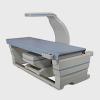Consensus on Abandoning Blind Gynaecological Procedures

Information Exclusively Intended for Healthcare Professionals
Blind gynaecological procedures, for example diagnostic and therapeutic interventions in the uterine cavity without visualisation, remain common across the world.
In fact, it was the main recommendation of the Technological Revolution in Hysteroscopy (HTRS) 2022 Congress in Malaga, where the Global Hysteroscopy Community (GCH), the American Association for Gynaecological Laparoscopy (AAGL) and European Society for Gynaecological Endoscopy (ESGE) agreed that replacing it with direct visualisation represented less risk to women.1
What risks are associated with blind gynaecological procedures?
There are a number of risks that come with blind gynaecological procedures – not least the fact that healthcare practitioners are unable to directly see the areas of interest within the uterus, which means that abnormalities can be missed. In a study evaluating the effectiveness of endometrial sampling via blind dilation and curettage (D&C), only 7.7% of cases of endometrial hyperplasia were diagnosed via blind D&C.2 Furthermore, in 87% of the women with focal lesions in the uterine cavity, the whole or parts of the lesion remained in situ post procedure.3
Depending on the reason for the procedure, there are also concerns with patient safety and further complications developing. For example, in the case of Retained Products of Conception (RPOC), a situation where blind D&C is commonly used, there are risks of uterine perforation, infection and development of adhesions, which could lead to future problems with fertility.4
What are the alternatives to blind gynaecological procedures?
An alternative to blind interventions, hysteroscopy, is considered by many to be the gold standard approach for evaluating endometrial pathology.5 This is a view that has been compounded by the development of smaller diameter devices, which has made cervical dilation and anaesthesia unnecessary.5 The direct visualisation of the cavity allows for focused biopsy and sampling of lesions, whereas with a blind procedure, there can be significant doubt about where the endpoint is (i.e. have all lesions been addressed).6
What steps need to be taken to stop a reliance on blind gynaecological procedures?
Training remains a key challenge – a systematic literature review of hysteroscopic training and assessment concluded that there was a large variation in the effectiveness of the training tools and the evidence supporting the assessment of skill was limited.7
While a dilation and curettage (D&C) procedure can be performed by healthcare professionals relatively early in their careers, a hysteroscopy requires a greater level of skill and dexterity. Gynaecologists need to feel confident before attempting the procedure, and now have the opportunity to practice using simulation and digital tools such as augmented reality (AR). Making these tools available globally is a key priority.
A shared responsibility to drive change
In other areas of medicine, there would not be a second thought about obtaining a clear view of a lesion or area of concern to take a targeted biopsy or attempt treatment, yet blind gynaecological procedures persist across the globe.
While the conversations regarding blind gynaecological procedures have started, we need to sustain the momentum collectively to make a change in the standard of care for women worldwide.
Accesswire. [Internet] Gynaecologists Warn That Blind Gynaecological Inverventions Endanger Women’s Health. Press Release. June 2, 2022. [Cited April 2024] Available from: https://www.accesswire.com/703708/gynaecologists-warn-that-blind-gynaecological-interventions-endanger-womens-health [Last accessed March 2023]
Lee DO, Jung MH, Kim HY. Prospective comparison of biopsy results from curettage and hysteroscopy in postmenopausal uterine bleeding. J Obstet Gynaecol Res. 2011 Oct;37(10):1423-6
Epstein E, Ramirez A, Skoog L et al. Dilatation and curettage fails to detect most focal lesions in the uterine cavity in women with postmenopausal bleeding. Acta Obstet Gynecol Scand. 2001 Dec;80(12):1131-6.
Alonso Pacheco L, Timmons D, Saad Naguib M et al. Hysteroscopic management of retained products of conception: A single center observational study. Facts Views Vis Obgyn. 2019 Sep;11(3):217-222.
Daniilidis A, Pantelis A, Dinas K et al. Indications of diagnostic hysteroscopy, a brief review of the literature. Gynecol Surg 9, 23–28 (2012). https://doi.org/10.1007/s10397-011-0695-3
OBG Management. [Internet] “Blind” endometrial sampling: A call to end the practice. Q&A with Dr Linda Bradley. [Cited April 2024]. Available from https://www.mdedge.com/obgyn/article/259222/gynecology
Savran M M, Sørensen S M, Konge L et al.Training and Assessment of Hysteroscopic Skills: A Systematic Review, Journal of Surgical Education, Volume 73, Issue 5, 2016,Pages 906-918






























